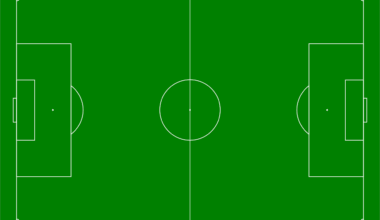Incorporating Functional Movement Screening Results into Golf Fitness Tracking
Golf fitness significantly improves performance and reduces injury risks. One key element in advancing your golf performance is tracking your fitness progress, specifically through functional movement screenings (FMS). FMS aims to assess and analyze an athlete’s movements and functional patterns, allowing trainers and athletes to identify limitations and asymmetries. By incorporating these results into your golf fitness tracking, you can create targeted training regimens. This enables you to measure improvement over time which is crucial for reaching specific performance goals. Moreover, tracking progress helps in setting benchmarks, which are vital for motivation and accountability. Assessing one’s physical capabilities, such as mobility, flexibility, and balance, allows golfers to tailor their training exercises. By following a consistent and systematic approach to tracking your progress, you empower yourself to enhance your game. Remember, golf is a sport that heavily relies on biomechanics, making the integration of FMS essential. As you assess movement patterns, you can better understand how to adjust your training routines, ultimately boosting your golf game performance in a structured manner with clear indicators of progress.
To implement the FMS effectively, begin by conducting a thorough assessment. Gather information about your current physical condition, including any previous injuries or limitations. This knowledge will be critical when forming a tailored training plan, ensuring it addresses your unique needs. An FMS typically includes a series of movement tests designed to evaluate essential aspects such as stability, flexibility, and strength. The results will indicate areas requiring improvement, equipping you with a focused strategy for progress tracking. With the data gathered, set achievable goals based on the identified movement deficiencies. For instance, if limited hip mobility is highlighted, your training program should include specific stretches and strength exercises targeting this area. Measure your performance regularly, noting both improvements and setbacks. It’s important to adapt your fitness routine as necessary, depending upon your progress tracking results. This continuous loop of assessment, adjustment, and advancement ensures that you are always working towards becoming a better player. Keeping a detailed log of your progress will also enable you to stay motivated as you visualize your development over time.
Training Regimens Based on FMS Data
Once you have your functional movement screening results and have set fitness goals, the next step is designing training regimens tailored to these findings. These training regimens should focus on enhancing your physical capabilities relevant to golf performance. Exercises should be selected, emphasizing mobility, strength, and stability to address specific areas highlighted by your FMS. For example, if your screening indicates weak core strength, including exercises such as planks, rotational movements, or medicine ball workouts should be prioritized. Implement movements that mimic golfing actions, such as swings and postures, to improve body awareness and coordination. This targeted approach not only improves your physical condition but also enhances your golfing skills. Regular assessments every few weeks will provide insight into your improvement and guide training modifications when necessary. An effective training regimen also includes proper warm-ups and cool-downs to prevent injuries along the way. Consistently tracking your progress while engaging in structured workouts is essential. Celebrate small victories as they will keep you motivated and committed to your golf fitness journey toward achieving various fitness milestones.
In addition to physical training, another critical aspect of incorporating FMS results into your golf fitness tracking is integrating recovery protocols. Recovery significantly influences performance, and it’s essential to allow the body sufficient time to heal and adapt post-training. Based on the results of your FMS, you can determine the recovery techniques that best suit your needs. Techniques such as foam rolling or supervised stretching exercises can help mitigate muscle tightness while promoting flexibility and mobility. Including yoga or similar practices in your routine can help develop stability and mental focus. Creating a conscious recovery plan that aligns with your training regimen is crucial for sincere improvement. Regularly revisit and adjust this plan based on your ongoing assessments. Monitoring your recovery and how it impacts your fitness will guide your training schedule, indicating when to intensify workouts or when to dial down. By understanding the impacts of recovery on your physical performance, you’ll not only become a better golfer but also a healthier athlete overall, minimizing injury risks while maximizing efficiency in play.
Utilizing Technology for Better Golf Fitness Tracking
Advancements in technology provide golfers with tools that significantly enhance fitness tracking based on FMS results. Numerous apps and wearable devices are now available that facilitate this process, offering smart solutions for systematic assessments. These tools can record metrics such as range of motion, strength levels, and other performance markers, making it easier to assess progress over time. With integrated technology, the monitoring process becomes more immediate and detailed. For example, certain fitness apps allow you to input your FMS data and automatically generate tailored workouts, taking the guesswork out of training plans. Moreover, use data analytics to track your improvements statistically; this can help visualize your progress more effectively. Sophisticated video analysis can also aid in assessing movement patterns during practice sessions. By recording swings or movements, you can identify subtle changes and areas that need attention. This technology not only aids in progress tracking but also engages golfers, making the training process appealing and less daunting, fostering a commitment to their long-term fitness path.
A community or support group plays a vital role in golf fitness based on FMS tracking. Engaging with fellow golfers who share similar fitness goals can encourage motivation and accountability. Transitioning your commitment to golf fitness from an individual endeavor to a group challenge can make workouts more enjoyable and fulfilling. Many golfing communities support discussions about fitness routines, challenges, and results, providing an avenue for inspiration. Online forums or local clubs offer opportunities to exchange experiences, tips, and suggestions regarding golf training. Joining workout classes specifically designed for golfers can also create a sense of camaraderie. This added support system enables you to stay focused and committed to your fitness goals. Fostering connections can help you troubleshoot issues collectively, as you gain insight from shared experiences. It’s essential to surround yourself with like-minded individuals who stimulate progress within a friendly competitive environment. Leveraging a community strengthens the overall commitment to fitness, making it an active and integral part of your golfing journey. Utilizing these connections for motivation will aid significantly in tracking your improvements.
The Road Ahead: Continual Improvement and Adaptation
The journey of incorporating FMS into golf fitness tracking is an ongoing process. Continual improvement and adaptation are essential not just for physical prowess but also for achieving long-term success in golf. Regularly revisiting your functional movement screening allows for realignment of fitness goals and training protocols. As you progress, setting new challenges becomes necessary. The importance of embracing change is critical; as your physical condition improves, your training must evolve to all aspects reflecting your growth. Establishing yearly fitness objectives alongside monthly tracking ensures a motivational structure to your regimen. By adopting an adaptive approach, you will develop resilience toward training pressures. Consider evolving technology and methods not only to track but also to enhance your training routine, adapting to the latest research. Continuous learning about body mechanics, nutrition, and hydrating requirements can contribute to optimization. Thus, you not only enhance your golf performance but also gain invaluable insights about your physical capabilities over time. By prioritizing adaptive practices in your fitness journey, you will undoubtedly emerge as a stronger, more efficient golfer.
In summary, effectively integrating functional movement screening results into your golf fitness tracking can lead to substantial benefits. Each aspect discussed—from assessment to tailored regimens, recovery protocols, and utilizing technology—builds a comprehensive holistic approach. Recognizing the importance of progress tracking is pivotal; it empowers golfers to take charge of their physical fitness journey while addressing areas that need improvement. A systematic plan will not only enhance your performance but also elevate your overall enjoyment of the game. Engaging in transformational practices and redefining training routines create a stronger foundation for the future. Remember, improvements do not solely stem from physical activity; rather, it encompasses recovery, community engagement, and continual adaptation. By prioritizing these elements within your approach to golf fitness, you will foster a lifestyle that not only promotes peak performance but elevates your love for the sport. As you embark on this journey, maintain focus on personal advancements while enjoying the process of growth and improvement. Embrace the path toward exceptional golf performance and health with confidence, dedication, and enthusiasm.


